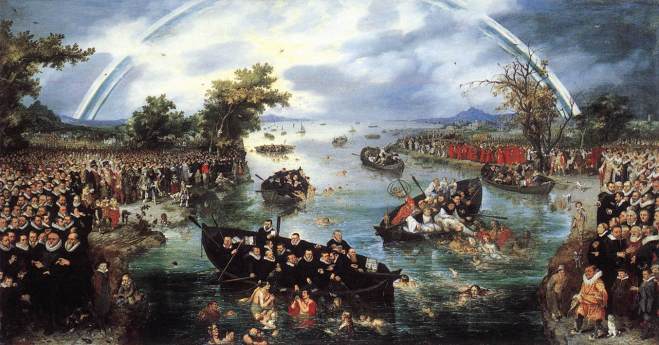This one is borrowed directly from the Oxford English Dictionary, which today informs us that Pisteology is ‘A theory or science of faith’. From the few citations given by the dictionary, it seems a) that it didn’t really catch on (one to try and rectify!), and b) that it implicitly refers to Christianity.
Since the OED dates first use to 1880, it’s not a term which the early modern men and women we study would have recognised. Still, it chimes interestingly with a question that’s dogging my own research: what is the difference between the study of religion and the study of belief? Is it possible to excavate (especially at such a historical distance) the operations and experience of faith as well as its articulation and performance? And what is the connection between pisteology and piscatology (fishing)?



